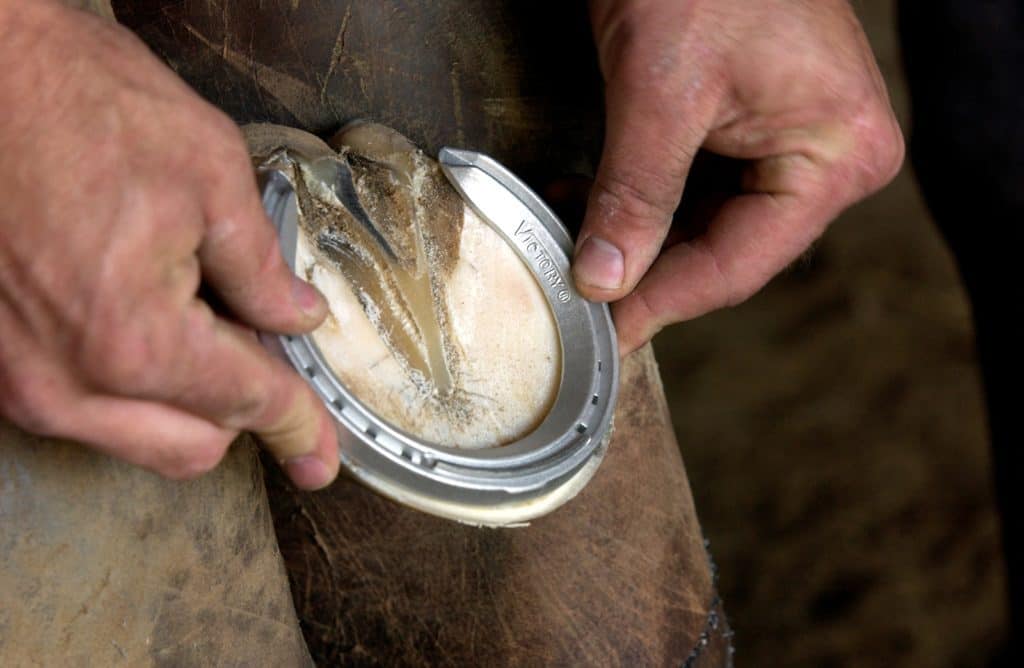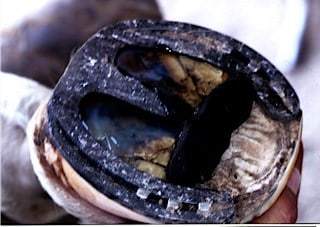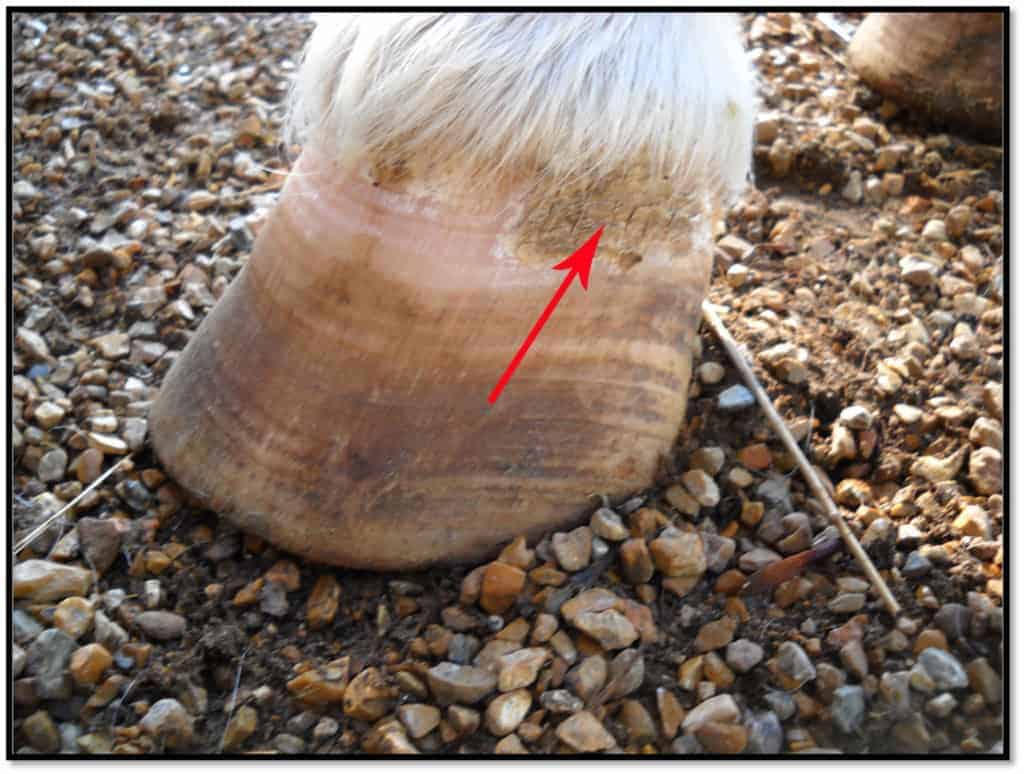
Physical Exam of the Horse Hoof
Learn about healthy hoof conformation and common, potentially function-affecting abnormalities.

Learn about healthy hoof conformation and common, potentially function-affecting abnormalities.

One veterinarian outlines several common questions about the barefoot concept and shares her thoughts on each.

Far too often when discussing a horse’s foot, we use the word “normal” as a reference point to determine its state of health. But what is the “normal” we are comparing it to?

Dr. Scott Palmer describes some common racehorse shoeing techniques.

Horse owners and veterinarians can identify a club foot based on classic signs and grades of severity.

A specific trimming technique increased the hoof’s weight-bearing area and increased the heel angle.

Study examines changes in toe angle and proximal hoof circumference without shoes.

This hand-forged shoe offers an option for supporting horses suffering laminitis.

These state-of-the-art pressure sensors that can measure the forces at more than 1,000 location on the hoof.

The first step in managing an equine foot problem successfully is to attain an accurate diagnosis.

One researcher says that it is very rare to see a spontaneous quarter crack not associated with sheared heels.

Certain hoof characteristics can be associated with chronic lameness, while others point to a sound horse.

Picking up on subtle signs of hyperinsulinemia is one way veterinarians can try to halt laminitis onset.
The summit will offer 68 hours of hoof care education focused around the theme “Zeroing in on Soundness.”
Sue Dyson, MA, VetMB, PhD, DEO, FRCVS, and Chris Gregory, CJF, FWCF, will present at the lecture in January.

Farriers can help devise a hoof care plan to helps a performance horse return to work as soon as possible.
Stay on top of the most recent Horse Health news with
"*" indicates required fields